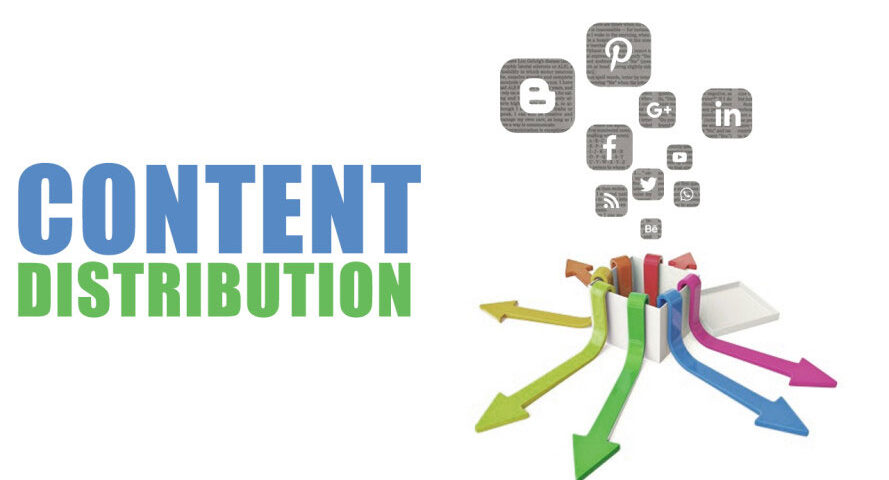Unveiling Effective Content Distribution Strategies for Maximum Reach

Mastering the Art of Crafting Compelling Blog Posts: A Step-by-Step Guide
January 25, 2024Engage Your Audience: Interactive Content Ideas for Quizzes, Polls, and Infographics
February 3, 2024Unveiling Effective Content Distribution Strategies for Maximum Reach

In the ever-evolving landscape of digital content, creating valuable and engaging material is just one part of the equation. Equally important is ensuring that this content reaches its intended audience effectively. This is where content distribution strategies come into play. Crafting a brilliant piece of content is futile if it doesn’t reach the right eyes. To maximize the impact of your content, it’s crucial to employ effective distribution strategies tailored to your target audience and platforms. Let’s delve into some key strategies that can help amplify your content’s reach:
Understand Your Audience
Before embarking on any distribution strategy, it’s paramount to have a deep understanding of your target audience. Who are they? What platforms do they frequent? What type of content do they engage with the most? By comprehending your audience’s preferences and behavior, you can tailor your distribution efforts to resonate with them effectively.
Leverage Multiple Channels
Diversity is key when it comes to content distribution. Instead of relying solely on one channel, explore various platforms to reach a wider audience. This might include social media platforms like Facebook, Twitter, LinkedIn, Instagram, or industry-specific forums and communities. Each platform has its unique audience demographic and content format, so adapt your content accordingly for maximum impact.
Optimize for SEO
Search Engine Optimization (SEO) plays a pivotal role in content distribution, especially for long-term visibility. By optimizing your content with relevant keywords, meta descriptions, and backlinks, you can improve its chances of ranking higher in search engine results pages (SERPs), driving organic traffic to your website or platform.
Content Syndication
Syndicating your content involves republishing it on third-party websites or platforms to extend its reach. This could entail guest blogging, submitting articles to online publications, or partnering with influencers and content aggregators. By tapping into existing audiences on established platforms, you can amplify your content’s exposure and attract new followers or customers.
Email Marketing
Despite being one of the oldest digital marketing tactics, email remains a potent tool for content distribution. Building a robust email list of subscribers who have opted to receive updates from you enables direct communication and content distribution. Craft engaging newsletters or personalized emails to share your latest content, promotions, or updates with your audience.
Paid Advertising
While organic methods are valuable, sometimes a little boost from paid advertising can significantly enhance your content’s visibility. Platforms like Google Ads, Facebook Ads, or sponsored content on LinkedIn offer targeted advertising options to reach specific audience segments. Invest in paid promotion wisely, targeting those most likely to engage with your content.
Community Engagement
Engaging with online communities and forums relevant to your niche can be an effective way to distribute your content. Participate in discussions, answer questions, and provide valuable insights, subtly promoting your content where appropriate. Building rapport within these communities can lead to organic sharing and increased visibility for your content.
Repurpose Content
Don’t limit your content distribution to its original format. Repurpose your content into different mediums such as videos, infographics, podcasts, or slideshows to cater to diverse audience preferences. Each new format presents an opportunity to reach audiences on different platforms and engage them in unique ways.
Monitor and Analyze
Lastly, continually monitor the performance of your content distribution efforts through analytics. Track metrics such as reach, engagement, click-through rates, and conversion rates to gauge the effectiveness of your strategies. Analyzing this data enables you to identify what works well and what needs improvement, refining your approach over time for optimal results.
In conclusion, effective content distribution is essential for maximizing the impact of your content marketing efforts. By understanding your audience, leveraging multiple channels, optimizing for SEO, syndicating content, utilizing email marketing, investing in paid advertising, engaging with communities, repurposing content, and monitoring performance, you can develop a robust distribution strategy that amplifies your content’s reach and drives meaningful results. Stay agile, experiment with different tactics, and adapt to evolving trends to stay ahead in the competitive digital landscape.
